The world of flora is filled with extraordinary specimens, some renowned for their distinctive forms, while others command attention due to their astonishing value – in some cases, surpassing even that of gold.
This article presents a curated selection of the ten most valuable flowers globally: the Juliet Rose, “Sugen He Ding” Lotus Petal Orchid, Ghost Orchid, Shuijing Orchid, Tianyi Hechun Orchid, Datang Fengyu, Clivia, Nongke Orchid, Shuihuo Lotus, and Jinsha Tree Chrysanthemum.
Let us embark on an exploration of these exquisite and rare botanical treasures, each with its own unique story and characteristics that justify its extraordinary worth.
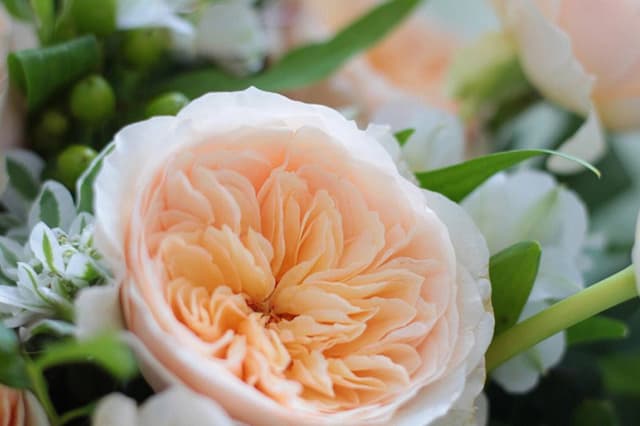
The Juliet Rose made its spectacular debut at the prestigious Chelsea Flower Show in 2006, commanding attention with its unprecedented price tag of 3 million pounds (approximately 26.95 million CNY). This extraordinary valuation instantly secured its position as one of the world’s most expensive flowers.
Often referred to as the “3 million pound rose,” the Juliet Rose has consistently retained its crown as the most coveted David Austin English Rose. Its popularity among rose enthusiasts is unparalleled, making it a highly sought-after variety in gardens worldwide.
Developed by renowned rose breeder David Austin, the Juliet Rose (Rosa ‘Ausjameson’) is the result of 15 years of meticulous breeding and research. This extensive development process contributes significantly to its hefty price tag and exclusive status in the horticultural world.
As a cut flower, the Juliet Rose has garnered numerous international horticultural accolades, testament to its exceptional qualities. Its large, deeply cupped blooms showcase a mesmerizing peach-to-apricot hue, transitioning to a soft pink at the outer petals. This unique color progression, combined with its lush, full-petalled form, epitomizes the charm of old garden roses with the reliability and repeat-flowering nature of modern cultivars.
The Juliet Rose boasts an impressive vase life, maintaining its beauty for extended periods when cut. This characteristic, along with its year-round blooming capacity, makes it a favorite among florists and event planners for luxury arrangements and high-end weddings.
One of the most captivating features of the Juliet Rose is its delicate fragrance. The blooms emit a subtle, fruity rose scent with hints of tea, creating an olfactory experience that is both sophisticated and alluring. This understated aroma perfectly complements the flower’s visual appeal, engaging multiple senses and enhancing its overall charm.
In the garden, the Juliet Rose forms a robust, bushy shrub reaching approximately 1 meter in height and spread. It demonstrates good disease resistance and adaptability to various growing conditions, making it a relatively low-maintenance option for both novice and experienced gardeners.
The Juliet Rose’s enduring popularity and astronomical price point underscore its significance in the world of horticulture. It stands as a testament to the art and science of rose breeding, embodying the perfect fusion of beauty, fragrance, and horticultural achievement.
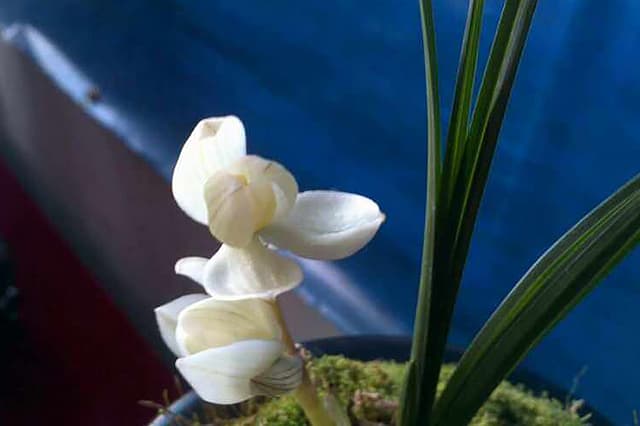
On March 20, 2010, at the 10th Asia Pacific Orchid Conference held in Chongqing, China, a remarkable lotus petal orchid known as “Sugen He Ding” (素根荷鼎) was appraised at an astonishing 15 million CNY, securing its position as the most valuable orchid at the conference.
This extraordinary orchid, native to Dali in Yunnan Province, is renowned as a “rare treasure” among orchid enthusiasts and collectors. Its exceptional rarity in the horticultural market contributes significantly to its value. The “Sugen He Ding” belongs to the genus Paphiopedilum, commonly known as slipper orchids, which are prized for their unique pouch-like labellum.
What sets “Sugen He Ding” apart is its exquisite form and coloration. The flower typically exhibits pristine white petals with delicate green veining, reminiscent of lotus petals – hence its colloquial name “lotus petal orchid.” The dorsal sepal often displays intricate patterns, while the pouch-like lip adds to its allure with subtle hues.
In the commercial market, a single “Sugen He Ding” specimen can command an impressive price of up to 4 million CNY. This astronomical figure reflects not only the orchid’s rarity but also its cultural significance in Chinese horticulture. The high valuation is further justified by the challenging propagation and cultivation requirements of this species, which demand expert care and specific environmental conditions to thrive.
It’s worth noting that such extreme valuations in the orchid world are often driven by a combination of factors including rarity, genetic uniqueness, historical significance, and collector demand. While the price may seem extraordinary to many, it underscores the passion and dedication of orchid enthusiasts and the cultural importance of these plants in certain societies.
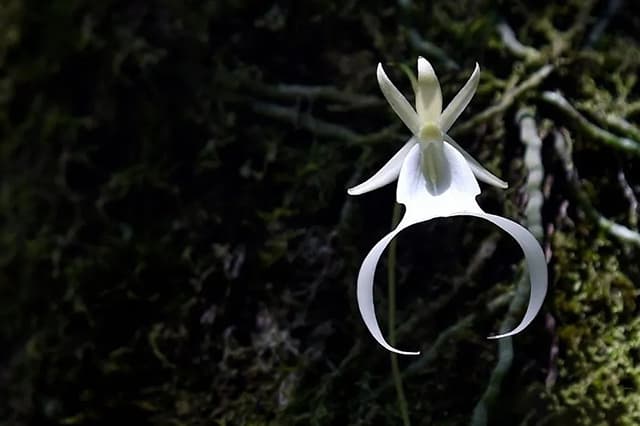
The Ghost Orchid (Dendrophylax lindenii) is a remarkable epiphytic orchid, renowned for its ethereal beauty and extreme rarity. This orchid thrives in specific ecosystems, primarily found in the swamps of Florida and Cuba. It adapts to life in cypress trees and pop ash in wetland areas, often sharing its habitat with alligators.
Unlike most plants, the Ghost Orchid lacks leaves. Instead, it possesses a network of flattened, photosynthetic roots that resemble pale green ribbons. These specialized roots serve a dual purpose: they not only absorb nutrients and moisture but also perform photosynthesis. The roots adhere tightly to the bark of host trees, forming a symbiotic relationship without parasitizing the tree.
The Ghost Orchid’s propagation requirements are exceptionally demanding, making artificial cultivation a significant challenge. It relies on a delicate balance of high humidity, filtered light, and specific fungal associations for germination and growth. These exacting needs contribute to its scarcity in the wild and have thwarted most attempts at commercial propagation.
Due to its rarity and vulnerability, the Ghost Orchid is protected under Appendix II of the Convention on International Trade in Endangered Species of Wild Fauna and Flora (CITES). This listing prohibits the collection of wild specimens and strictly regulates any international trade. Consequently, it is illegal to harvest or sell wild Ghost Orchids, adding to their mystique and value among orchid enthusiasts.
The extreme rarity, coupled with its legendary status in the orchid world, has led some orchid experts to estimate the hypothetical value of a single Ghost Orchid plant at around 15 million CNY (approximately 2.3 million USD). However, it’s crucial to note that this valuation is purely theoretical, as the sale of wild specimens is illegal, and no legitimate market exists for these protected plants.
The Ghost Orchid’s allure extends beyond its monetary value. Its ephemeral white flowers, which seem to float in mid-air due to the plant’s leafless nature, have captured the imagination of botanists and nature lovers alike. This fascination has even inspired books and films, further cementing its status as one of the most sought-after and valuable orchids in the world.
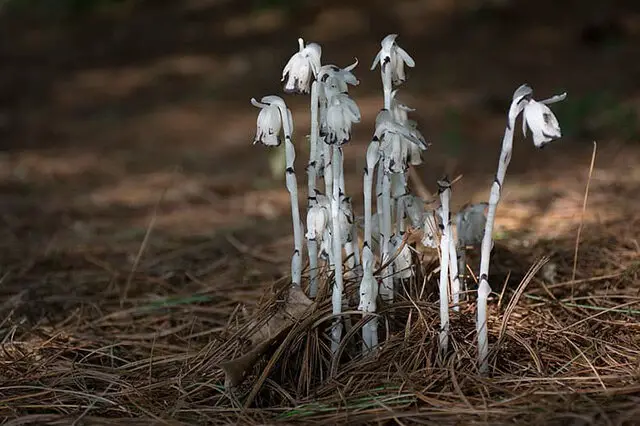
At the 26th China (Dali) Orchid Exposition, an exceptional orchid specimen commanded a staggering price of 12.3 million CNY. The owner emphasized that this orchid’s extraordinary value stems not from its floral form alone, but from its status as an exceptionally rare genetic resource within the Orchidaceae family. This specimen exhibits the highly coveted characteristic of “dual-artistry in leaf and flower,” a trait that significantly enhances its botanical and horticultural importance.
The blossom of this orchid is classified as a “crystal wonder flower,” a term that refers to its unique structural composition. The pink hue adorning the petals is not merely pigmentation but is created by intricate crystal microstructures within the petal tissue. This phenomenon, known as structural coloration, is relatively rare in the plant kingdom and contributes to the flower’s iridescent and captivating appearance.
The artistry of its foliage is equally remarkable, showcasing a distinctive linear structure that sets it apart from typical orchid leaves. Each leaf features a striking porcelain white cap at its apex, contrasting beautifully with the lush green of the main leaf blade. The leaf tips exhibit crystal structures similar to those found in the petals, creating a harmonious visual connection between the plant’s vegetative and reproductive parts.
The leaves of this Shuijing Orchid are notably thick and broad, characteristics that not only contribute to its aesthetic appeal but also suggest robust health and potential longevity. These attributes are highly prized in horticultural circles, as they indicate a plant with strong genetic traits and excellent cultivation potential.
The combination of its unique crystal structures in both flowers and leaves, along with its overall morphological characteristics, makes this Shuijing Orchid a true botanical treasure. Its high valuation reflects not only its beauty but also its potential significance in orchid breeding programs and botanical research, underscoring the importance of preserving and studying such rare genetic resources in the world of orchidology.
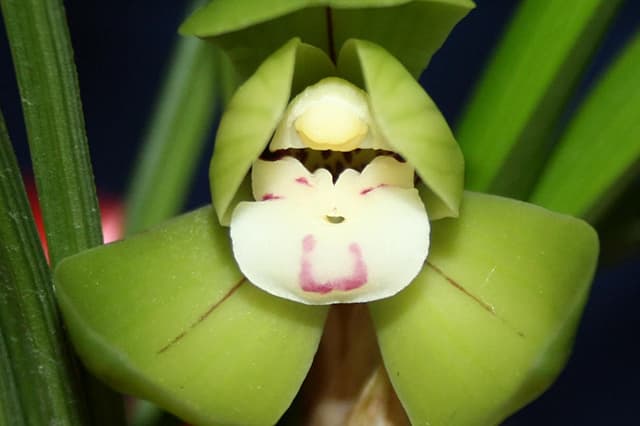
The Tianyi Hechun Orchid (天意荷春兰) is a remarkable cultivar of the Cymbidium genus, renowned for its exquisite golden blossoms. Each flower exhibits a large, lotus-like petal formation, characterized by its pure, unblemished stamen—a feature that lends an almost otherworldly quality to this terrestrial orchid. The bloom’s pristine appearance and noble bearing have earned it the status of royalty among orchid varieties.
This cultivar is distinguished by its compact growth habit, featuring a stout and dwarf form that is highly prized in traditional Chinese horticulture. The Tianyi Hechun’s unique combination of golden coloration, perfect form, and manageable size makes it a divine specimen of the Hechun orchid type, which belongs to the spring-blooming section of Cymbidium (known as 春蘭 or “Spring Orchid” in Chinese).
The orchid made its debut in 2006 at the Guizhou Ethnic Culture Palace, immediately capturing the attention of orchid enthusiasts and collectors. Its reputation soared when it was showcased at the 7th Chengdu International Orchid Exposition. At this prestigious event, the Tianyi Hechun Orchid was presented with an astonishing price tag of 10 million Chinese Yuan (CNY), equivalent to approximately 1.5 million USD at the time. This valuation not only reflected its rarity and beauty but also solidified its status as a dream acquisition for orchid aficionados worldwide.
The exceptional value of the Tianyi Hechun Orchid can be attributed to several factors:
For orchid collectors and enthusiasts, the Tianyi Hechun Orchid represents the epitome of horticultural artistry and natural beauty. Its unparalleled elegance and scarcity have elevated it to the status of a living treasure, embodying the passion and dedication of orchid cultivation that has been a part of Chinese culture for centuries.
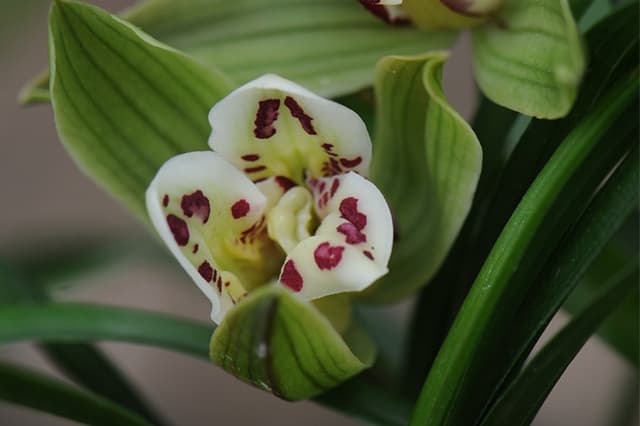
Datang Fengyu (大唐风雨), a remarkable orchid species, captivates viewers with its distinctive foliage and stunning floral displays. This extraordinary plant features both individual and clustered leaves, complemented by vibrant, densely clustered flowers. It stands as the crowning achievement among Art Orchid varieties, specifically in the linear, dwarf, and crystal categories, and represents a recent innovation in the field of Orchidaceae leaf artistry.
Botanically classified within the Orchidaceae family, Datang Fengyu is renowned for its exceptional aesthetic qualities. Its unique combination of foliar architecture and floral presentation sets it apart from other ornamental orchids. The plant’s growth habit, characterized by a mix of solitary and grouped leaves, provides an intriguing structural foundation that enhances its overall visual appeal.
The rarity of Datang Fengyu, particularly specimens of supreme artistic value, contributes significantly to its desirability among collectors and enthusiasts. A pivotal moment in its history occurred in 2001 when Huang Demin and associates from Weishan County, Yunnan Province, acquired four seedlings from a local farmer for 50,000 CNY. This investment would prove to be remarkably prescient.
Two years after this acquisition, the orchids blossomed with extraordinary beauty, creating a sensation at the 15th China (Leshan) Orchid Exposition. The exceptional quality of the blooms garnered a special award at this prestigious event, cementing Datang Fengyu’s reputation in the horticultural world.
The true market value of this exceptional orchid became apparent in 2006 when two Datang Fengyu plants were sold for astounding prices: 3.5 million CNY and 3.28 million CNY, respectively. These record-breaking sales underscored the plant’s status as a highly prized specimen in the realm of rare and collectible orchids.
The meteoric rise in value of Datang Fengyu – from a 50,000 CNY investment to multi-million CNY sales within just five years – illustrates the potential for significant appreciation in the rare plant market. It also highlights the importance of expert cultivation techniques and the role of horticultural expositions in showcasing and validating the quality of exceptional plant specimens.
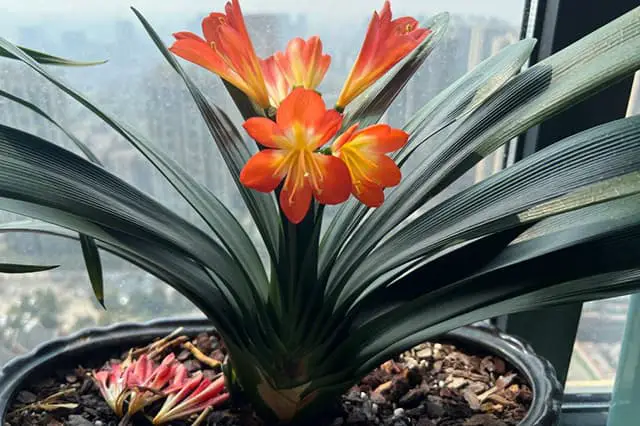
Clivia, a genus of perennial flowering plants native to southern Africa, has a rich history of cultivation and appreciation. Originally discovered in the wild, these striking plants were later introduced to Europe and Japan, where they gained popularity among horticulturists and plant enthusiasts.
In China, Clivia’s journey began in the mid-1940s, originating in Changchun, Jilin Province. From there, it gradually spread throughout the country, captivating gardeners with its vibrant, trumpet-shaped flowers and evergreen, strap-like leaves. The plant’s ability to thrive indoors and its long-lasting blooms contributed to its rising popularity.
Clivia’s value in the horticultural world reached new heights at the 2017 China Harbin Meiju Cup First Clivia Show. At this prestigious event, a particularly exceptional Clivia specimen commanded attention with its astonishing price tag of 1.98 million CNY (approximately 280,000 USD at the time). This remarkable valuation underscores the plant’s status as a highly prized collector’s item in China.
The factors contributing to such a high value likely include the plant’s rarity, unique color variations, perfect form, or possibly its lineage from a particularly esteemed cultivar. Clivia breeding has become an art form, with enthusiasts and professional growers constantly striving to develop new hybrids with unusual colors, larger blooms, or improved growth habits.
While not all Clivia plants command such astronomical prices, this example illustrates the passion and dedication of Clivia collectors and the potential for certain specimens to become incredibly valuable. It also highlights the cultural and economic significance of ornamental plants in China’s horticultural market.
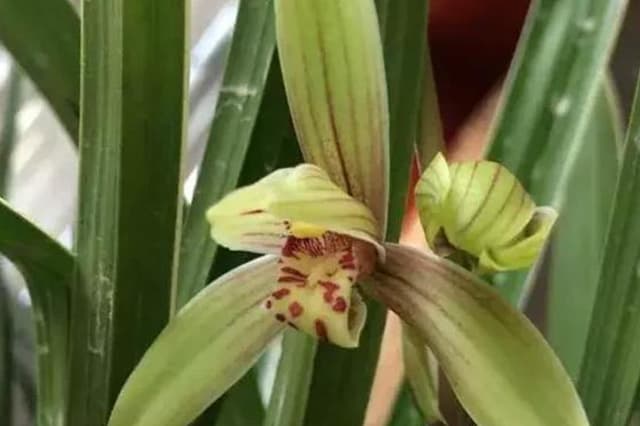
This remarkable orchid is the result of an intensive eight-year research project conducted by the Shenzhen Agricultural Science laboratory. The research team employed cutting-edge biotechnology and advanced horticultural techniques to develop this unique cultivar, pushing the boundaries of orchid breeding and cultivation.
The orchid’s exceptional value stems from its status as a completely novel variety, created through a meticulous process of genetic selection and biotechnological manipulation. This breakthrough in orchid development represents a fusion of scientific innovation and horticultural artistry, transcending traditional notions of luxury flora.
The cultivation process likely involved techniques such as in vitro propagation, polyploidy induction, and possibly genetic modification, allowing the researchers to create an orchid with unprecedented characteristics. These may include enhanced flower size, unique color combinations, improved vase life, or exceptional fragrance.
In 2005, this groundbreaking orchid was presented at auction, where it commanded an astounding price of 1.68 million CNY (approximately 260,000 USD at the time). This valuation not only reflects the orchid’s aesthetic appeal but also acknowledges the significant investment in time, resources, and scientific expertise required for its creation.
The Agricultural Science Orchid serves as a testament to the potential of applying advanced scientific methods to ornamental plant breeding. It exemplifies how the intersection of agricultural science and luxury markets can yield extraordinary results, opening new avenues for both scientific research and high-end horticultural products.
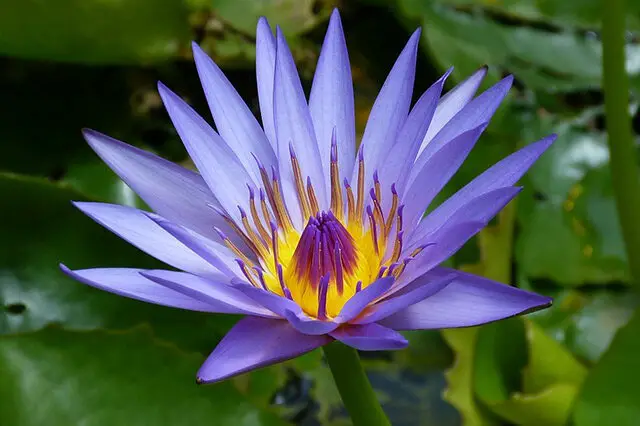
Also known as the Purple Water Lily, the Sleeping Flame Lily (Nymphaea thermarum) is a member of the Nymphaeaceae family and is considered the most precious flower in Grandilla. This rare aquatic plant exhibits a unique blooming cycle, flowering for only seven days each year.
The Sleeping Flame Lily boasts a striking appearance with its vibrant purple petals adorning the outer edges of the flower. At the center, golden filaments create a captivating contrast, surrounding the flower’s most distinctive feature – a specialized reproductive structure that only reveals itself briefly before the flower’s demise.
The flower’s common name, “Sleeping Flame Lily,” derives from its unusual reproductive strategy. The central structure, often mistakenly referred to as “antennae,” actually consists of modified stamen filaments. These filaments serve a protective function, shielding the true reproductive organs – the carpels and stamens – which remain dormant until just before the flower begins to wither. This adaptation likely evolved to maximize the plant’s reproductive success in its native habitat.
It’s important to note that the Sleeping Flame Lily is critically endangered in the wild, with its natural habitat limited to a single location in Rwanda. Conservation efforts are ongoing to protect this rare species.
The rarity and unique characteristics of the Sleeping Flame Lily contribute to its high value in the horticultural market. Authentic specimens are primarily available in Grandilla, where they command a premium price of approximately 150,000 euros, equivalent to about 1.2 million CNY. However, it’s crucial to emphasize that the trade of endangered plant species is strictly regulated, and potential buyers should ensure they are purchasing from legal and sustainable sources.
The Golden Sand Chrysanthemum is an exceptional orchid species that combines the characteristics of both orchids and chrysanthemums, making it a unique horticultural marvel. This rare specimen is classified under the genus Paphiopedilum, commonly known as slipper orchids, but exhibits distinct features that set it apart from typical members of this group.
Botanically, it is characterized by its tree-like growth habit, which is unusual for orchids. The plant develops multiple branches, creating a more expansive and architectural form than most orchid species. Its most striking feature is the abundance of petal-like bracts and numerous main flower petals arranged in a chrysanthemum-like configuration, hence its name.
The coloration of the Golden Sand Chrysanthemum is a delicate pale pink, which contributes to its ethereal beauty. This soft hue enhances its ornamental value, making it highly prized among collectors and enthusiasts. The plant is often referred to as the “king of the Lotus Petal Orchid,” a title that speaks to its superiority within its category.
What makes this orchid particularly valuable is its rarity as a tree-like, multi-petal variant. Such mutations in orchids are exceptionally uncommon, and when combined with its aesthetic appeal, it elevates the Golden Sand Chrysanthemum to a status of high ornamental and scientific importance.
The orchid’s prestige was officially recognized in February 2006 at the Tenth Orchid Expo held in Dali (Heqing), Yunnan Province, China. At this prestigious event, the Golden Sand Chrysanthemum was awarded a gold medal, affirming its exceptional qualities and rarity.
During the same expo, the orchid’s value was dramatically demonstrated when three mature, flowering specimens were purchased by Li Guanghong and Yang Kai, renowned orchid enthusiasts from Dali, Yunnan. Each plant commanded an extraordinary price of 800,000 CNY, resulting in a total transaction of 2.4 million CNY for the trio.
This significant investment underscores not only the rarity and beauty of the Golden Sand Chrysanthemum but also reflects the passionate culture surrounding orchid collection in China. Such high-value transactions are not uncommon in the world of rare orchids, where unique specimens can command prices comparable to fine art or precious gems.
The Golden Sand Chrysanthemum continues to be a subject of interest for botanists, horticulturists, and collectors alike, representing a pinnacle of orchid breeding and natural mutation. Its existence serves as a testament to the incredible diversity within the orchid family and the ongoing potential for discovering or developing new and extraordinary plant varieties.